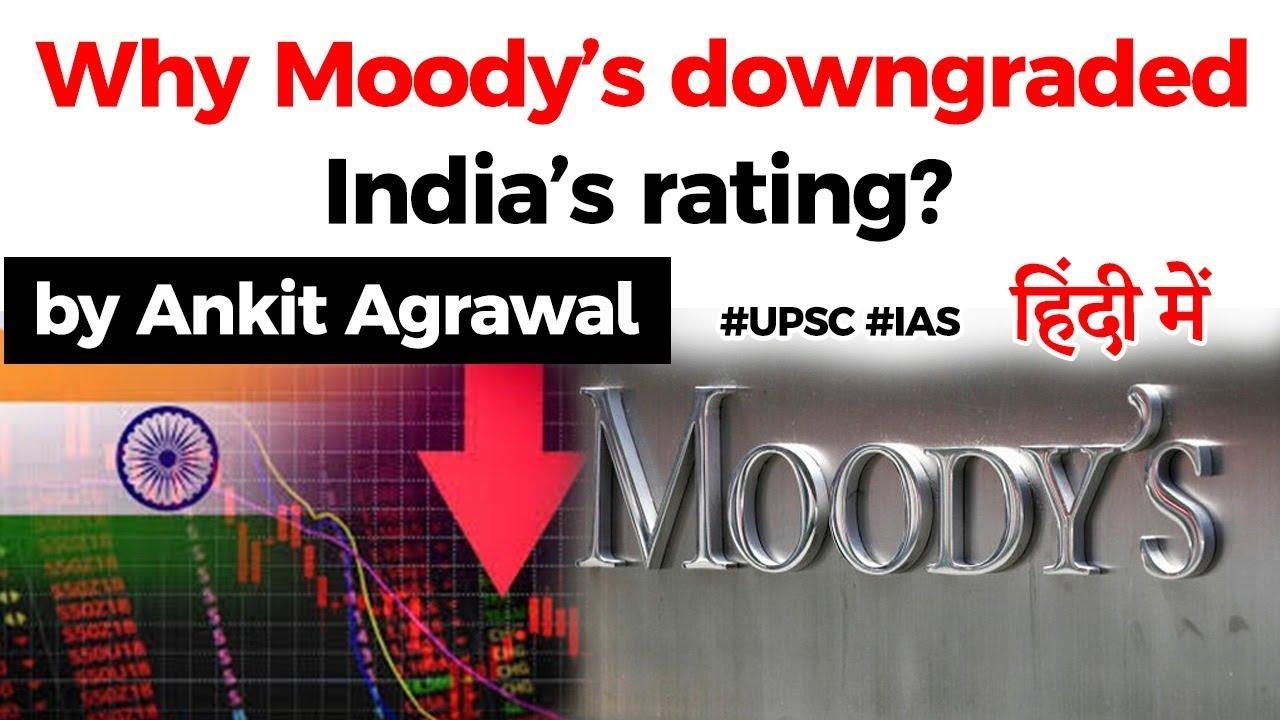Table of Contents


- Sovereign rating

THE OUTLOOK
- Negative The negative outlook reflects dominant, mutually- reinforcing, downside risks from deeper stresses in the economy and financial system that could lead to a more severe and prolonged erosion in fiscal strength than Moody’s currently projects.
- ‘Baa3’ is the lowest investment grade – just a notch above junk status.

1ST TIME IN 22 YEARS
- The downgrade by Moody’s comes nearly 22 years after it lowered India’s rating on June 19, 1998 in the aftermath of the country’s nuclear tests.
- Moody’s has been historically the most optimistic about India.
- Now it is in line with the other two main rating agencies in the world — Standard & Poor’s (S&P) and Fitch.

REASON FOR THE DOWNGRADE?
- Weak implementation of economic reforms since 2017.
- Relatively low economic growth over a sustained period.
- A significant deterioration in the fiscal position of governments (central and state).
- And the rising stress in India’s financial sector.


- In particular, Moody’s has highlighted persistent structural challenges to fast economic growth such as- “weak infrastructure, rigidities in labor, land and product markets, and rising financial sector risks”.
IS THE DOWNGRADE BECAUSE OF COVID-19 IMPACT?
- Moody’s was categorical that while this downgrade is taking place “in the context of the Coronavirus pandemic, it was not driven by the impact of the pandemic”.
- According to Moody’s “the pandemic amplifies vulnerabilities in India’s credit profile that were present and building prior to the shock, and which motivated the assignment of a negative outlook last year”.
IMPLICATIONS OF THIS DOWNGRADE?
- A rating downgrade means that bonds issued by the Indian governments are now “riskier” than before.
- It becomes costlier for the Indian government as well as all Indian companies to raise funds because now the world sees such debt as a riskier proposition.
ON GDP?
- Moody’s aexpects India’s GDP to contract by 4.0% in fiscal 2020 due to the shock from the coronavirus pandemic and related lockdown measures,
- Followed by 8.7% growth in fiscal 2021 and closer to 0% thereafter.
Latest Burning Issues | Free PDF






















 WhatsApp
WhatsApp